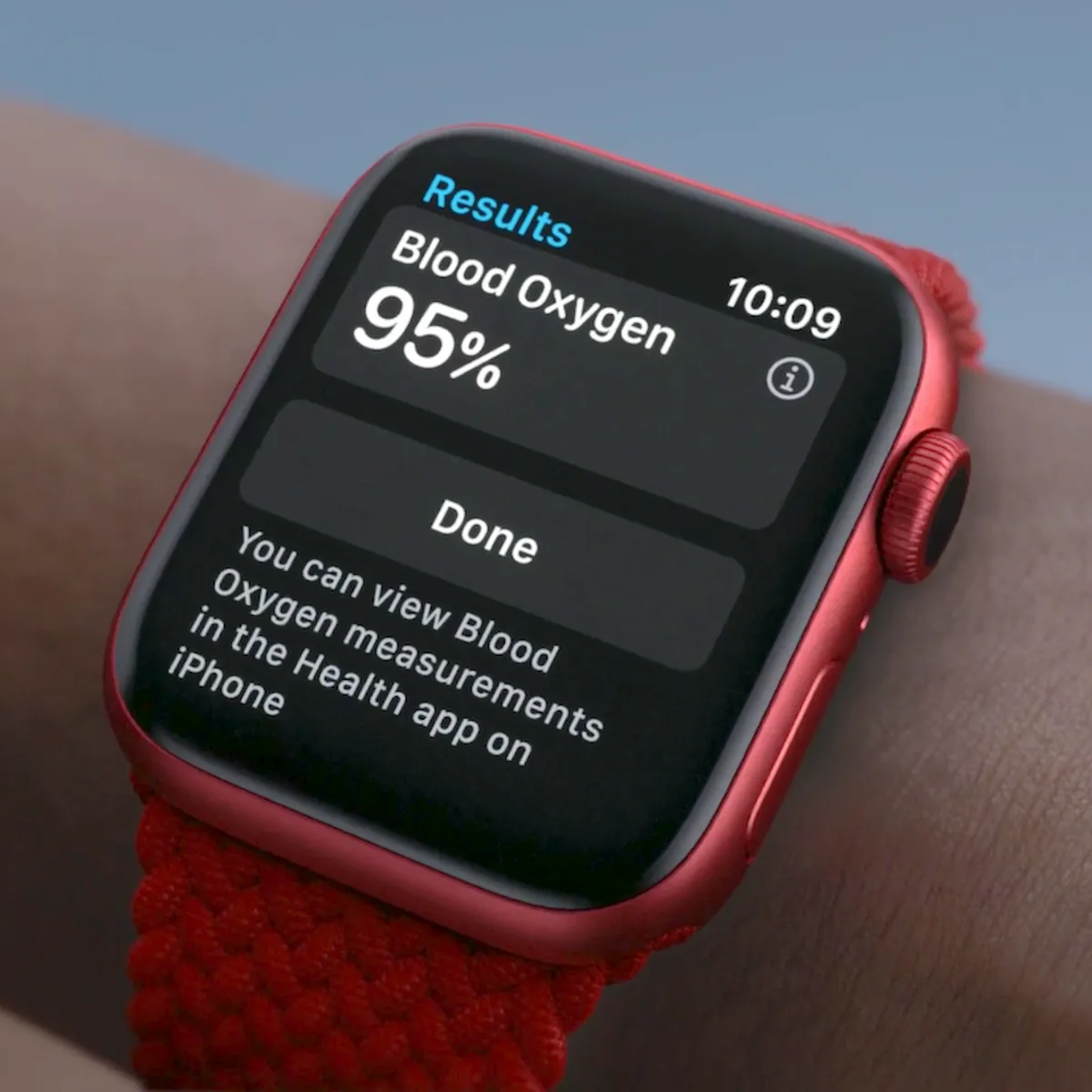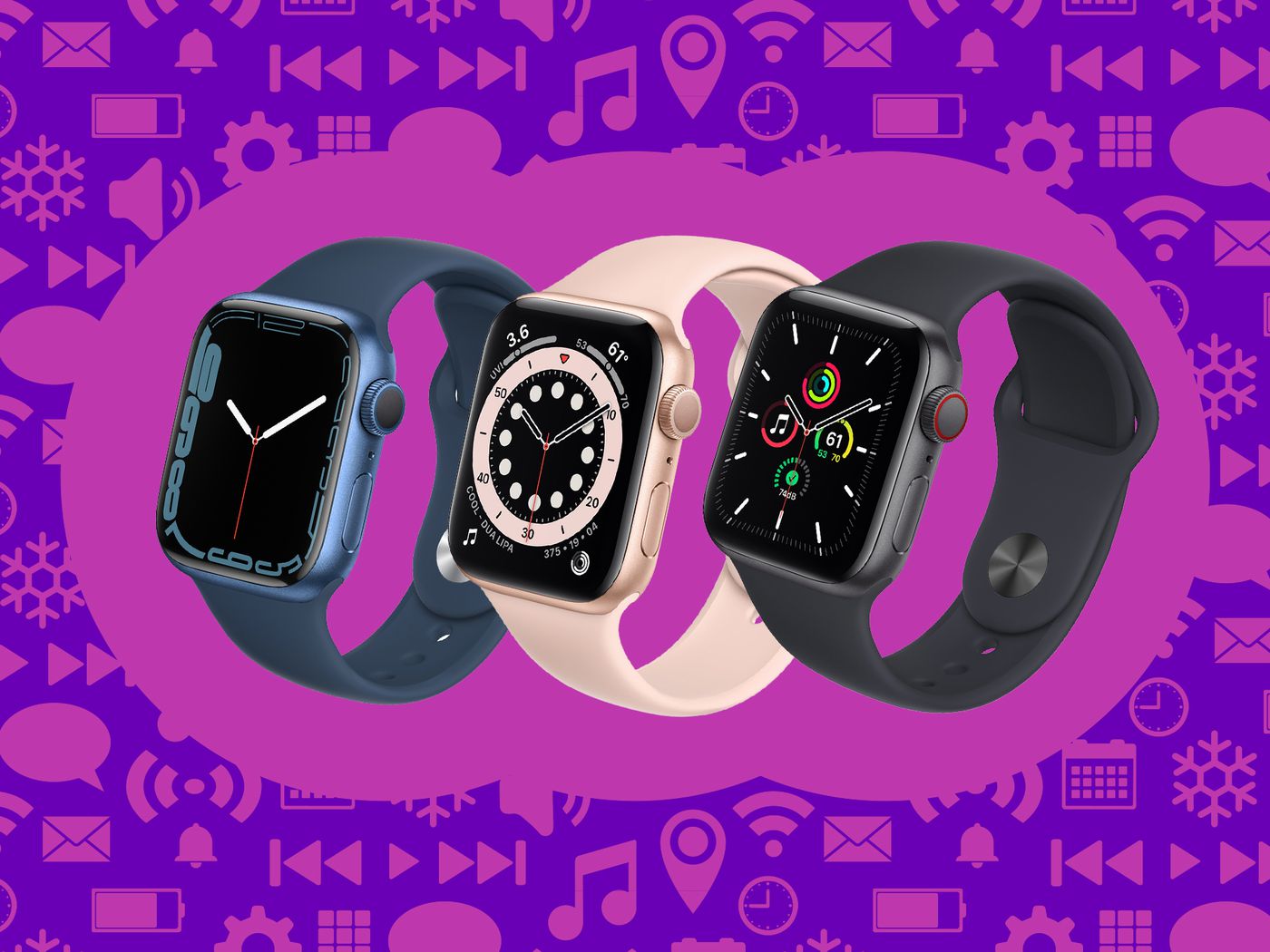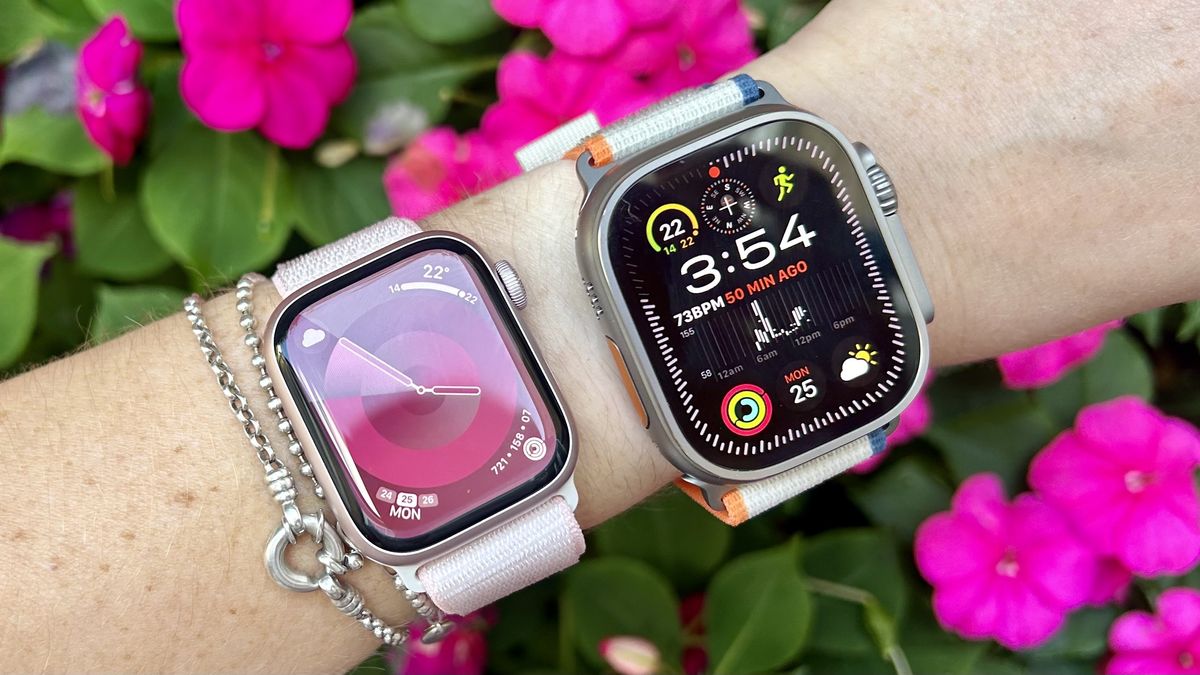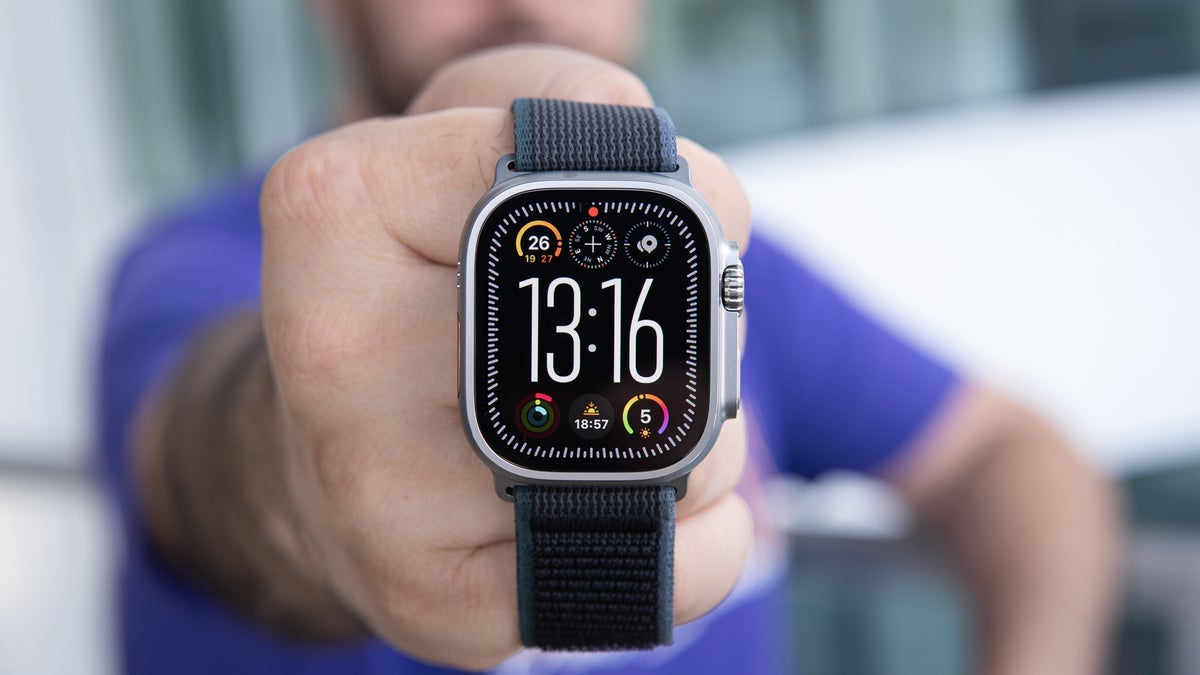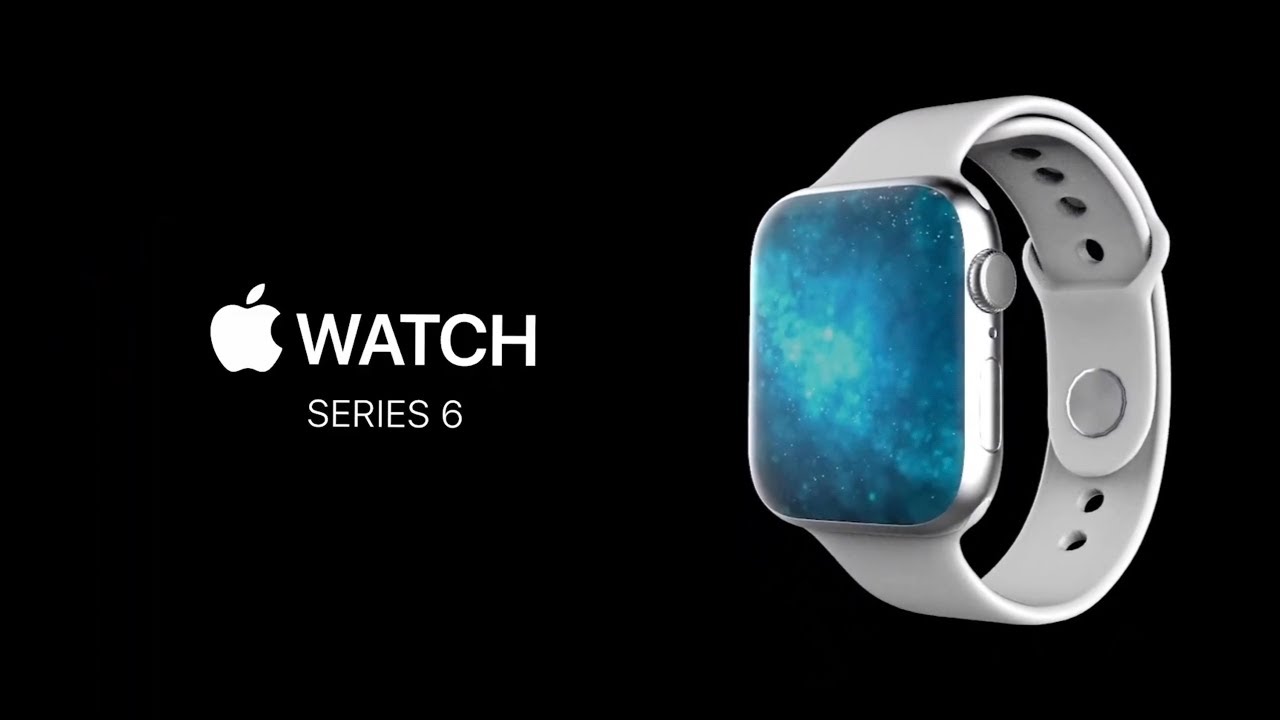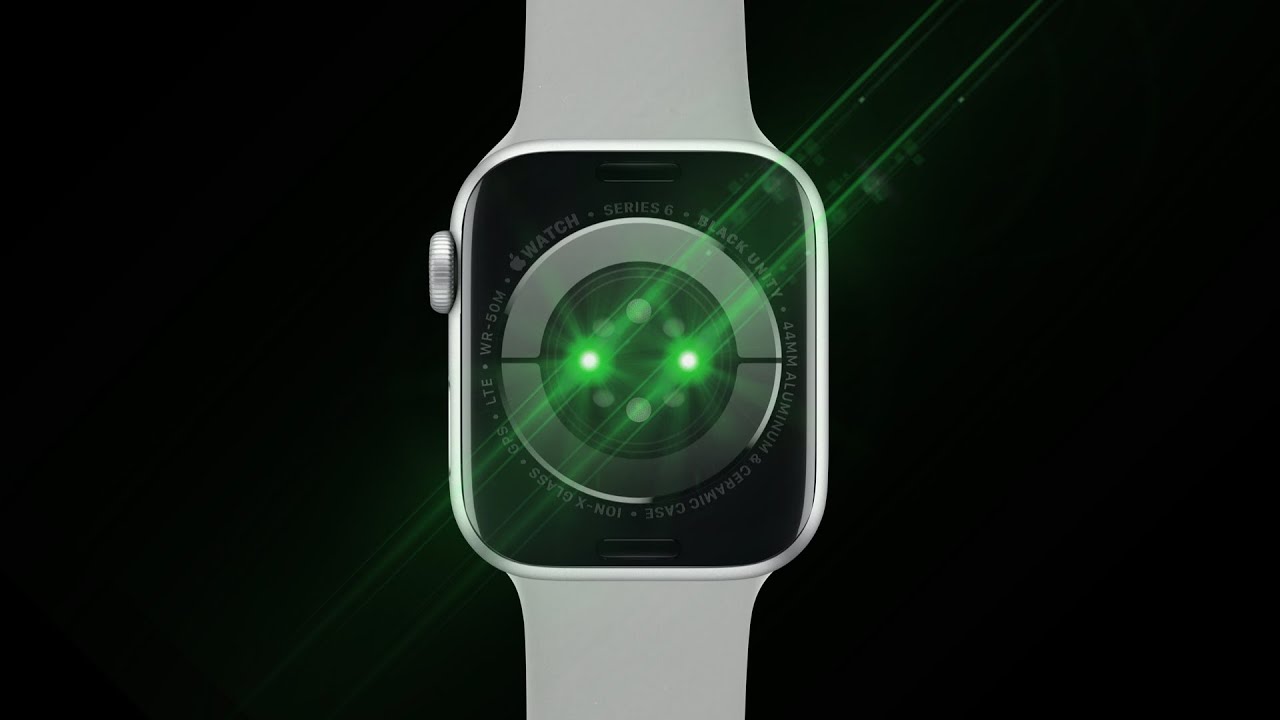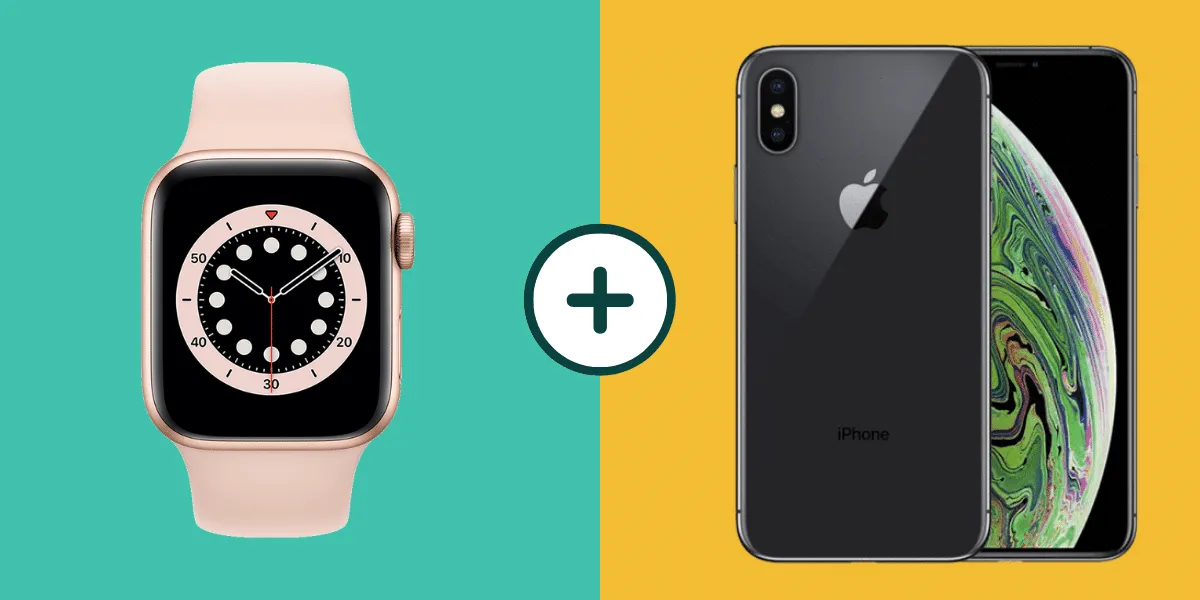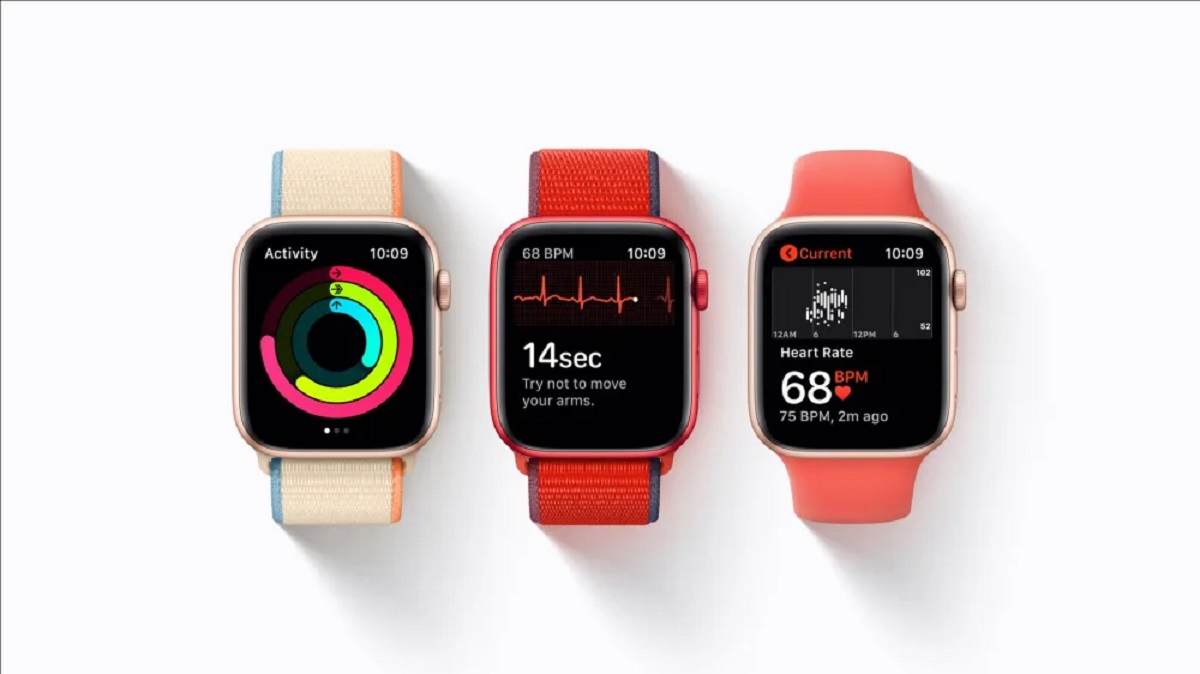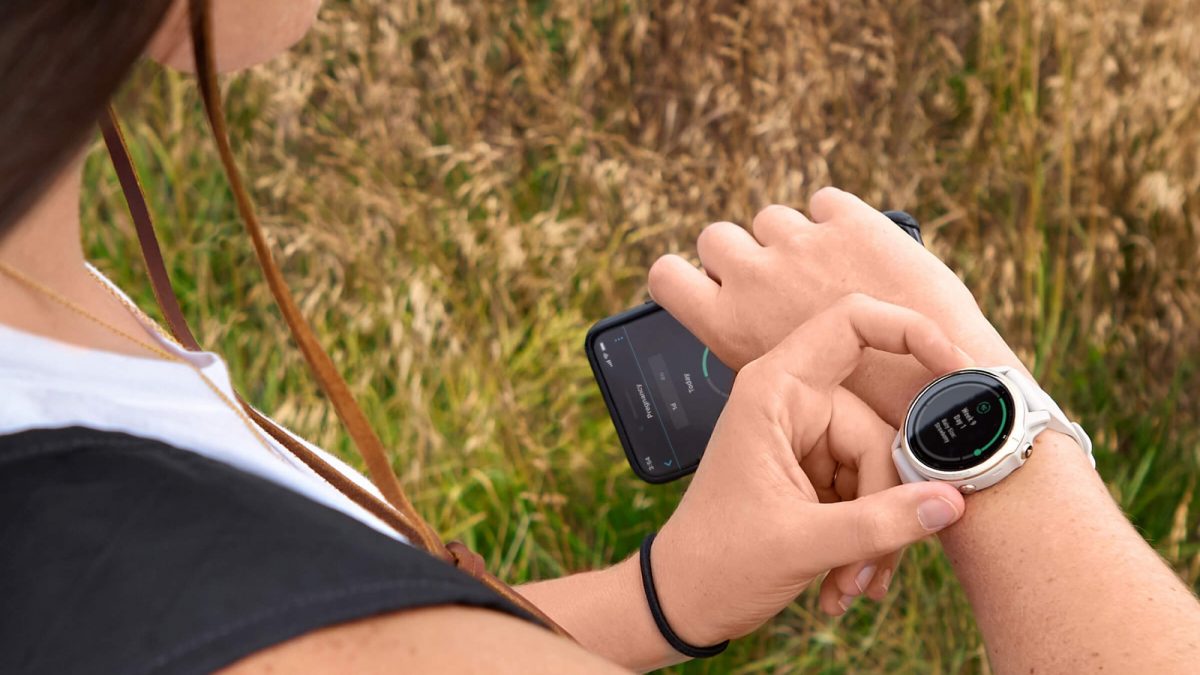Introduction
Welcome to our guide on how to check blood oxygen levels using your Apple Watch. With the advancement of technology, wearable devices like the Apple Watch now provide a convenient and accessible way to monitor various aspects of our health. One such feature is the ability to measure blood oxygen levels, which is crucial for assessing overall wellness.
In this article, we will explore what blood oxygen levels are, why they are important, and how the Apple Watch measures this vital metric. We will also provide step-by-step instructions on how to check your blood oxygen levels using your Apple Watch and offer tips for accurate measurements. Additionally, we’ll discuss how to interpret the results and when to consult a healthcare professional.
Monitoring blood oxygen levels has become increasingly relevant in light of the COVID-19 pandemic, as a drop in oxygen saturation can indicate respiratory issues. However, it’s important to note that the Apple Watch’s blood oxygen measurement feature is not intended for medical diagnosis or treatment. Instead, it serves as a useful tool for general wellness tracking and trend analysis.
So, if you’re ready to take control of your health and learn how to utilize the blood oxygen level feature on your Apple Watch, let’s dive in and discover how to make the most of this valuable functionality.
What is blood oxygen level?
Blood oxygen level, also known as oxygen saturation or SpO2, refers to the amount of oxygen carried by red blood cells in your body. It is represented as a percentage and indicates how well your body is delivering oxygen to tissues and organs.
Oxygen is essential for the normal functioning of cells, and adequate oxygen levels are crucial for maintaining overall health and well-being. When oxygen levels are optimal, your body can perform its various functions efficiently. However, if oxygen levels are too low, it can indicate an underlying health issue or compromise your body’s ability to function properly.
Blood oxygen levels are typically measured using a pulse oximeter, a device that uses light to determine the percentage of oxygen saturation in your blood. This non-invasive method has now been incorporated into wearable devices like the Apple Watch, making it convenient for users to monitor their blood oxygen levels regularly.
Understanding your blood oxygen level can provide insights into your respiratory and cardiovascular health. While blood oxygen levels can vary from person to person, a normal range is typically considered to be between 95% to 100%. Levels below 90% may indicate hypoxemia, a condition where there is a lower than normal level of oxygen in the blood. However, it’s important to note that individual circumstances and medical conditions can affect what is considered a normal range for different individuals.
Monitoring your blood oxygen level can be particularly important for individuals with chronic health conditions like asthma, chronic obstructive pulmonary disease (COPD), and sleep apnea. It can also be beneficial for athletes and individuals who engage in high-intensity physical activities, as it can help assess their oxygen consumption and recovery capabilities.
Now, that we understand what blood oxygen level is and why it is important, let’s explore how the Apple Watch measures this vital metric and how you can benefit from this feature.
Why is blood oxygen level important?
Maintaining optimal blood oxygen levels is crucial for your overall health and well-being. Here are a few reasons why monitoring your blood oxygen level is important:
1. Detection of respiratory issues: Your blood oxygen level provides valuable information about how well your respiratory system is functioning. Low blood oxygen levels can be an indication of respiratory conditions such as asthma, chronic obstructive pulmonary disease (COPD), pneumonia, or even COVID-19. By regularly monitoring your blood oxygen levels, you can catch any potential abnormalities or changes early on and seek appropriate medical attention.
2. Monitoring exercise intensity: For athletes and fitness enthusiasts, monitoring blood oxygen levels can help assess the intensity of their workouts. By tracking oxygen saturation before, during, and after physical activity, you can optimize your training, avoid overexertion, and ensure that your body is getting enough oxygen to meet the demands of your exercise routine.
3. Evaluating sleep quality: Low blood oxygen levels during sleep can be indicative of sleep apnea, a condition where breathing is interrupted during sleep. Monitoring your blood oxygen levels overnight can help identify sleep-related breathing disorders and assist in seeking the required treatment for better sleep quality and overall health.
4. Assessing altitude acclimatization: When traveling to high-altitude locations, monitoring your blood oxygen levels can help determine if your body is adapting to the reduced oxygen levels in the environment. This is particularly important for individuals who engage in activities like mountain climbing or hiking at high altitudes to prevent altitude sickness and ensure safety.
5. General wellness tracking: While blood oxygen levels are primarily associated with respiratory health, they can also provide insights into your overall well-being. Fluctuations in blood oxygen levels can be an early indicator of potential health issues and can prompt you to take proactive measures to maintain or improve your health.
Monitoring your blood oxygen level through your Apple Watch allows you to gauge your overall health status and make informed decisions regarding your lifestyle, exercise routines, and well-being. In the next sections, we will delve into how the Apple Watch measures blood oxygen levels and guide you on how to check your levels using this innovative device.
How does the Apple Watch measure blood oxygen level?
The Apple Watch utilizes a combination of hardware and software features to measure blood oxygen levels. It uses an optical sensor called photoplethysmography (PPG) that emits and measures the amount of light reflected by your blood vessels. This technology allows the Apple Watch to estimate the level of oxygen saturation in your blood.
When you initiate a blood oxygen measurement on the Apple Watch, the PPG sensor on the back of the watch detects the color of your blood, which changes based on the oxygen it carries. The watch emits green and infrared light onto your wrist and measures the reflected light to determine the amount of oxygen in your blood.
It’s important to note that the blood oxygen measurement on the Apple Watch is a snapshot and not a constant monitoring feature. You need to actively initiate the measurement through the Blood Oxygen app or by using other compatible apps or watch faces.
The accuracy of the blood oxygen measurement may vary based on several factors, including the fit of the watch, the position of your wrist, and potential interference from factors such as tattoos and ambient lighting. To ensure accurate results, make sure the watch is snugly fitted to your wrist, and follow the instructions provided by the Apple Watch during the measurement process.
Please remember that the blood oxygen measurement feature on the Apple Watch is not a substitute for professional medical advice, diagnosis, or treatment. It is intended for general wellness and fitness purposes.
In the next section, we will explain who can use the blood oxygen level feature on the Apple Watch and any considerations you should keep in mind when using this functionality.
Who can use the blood oxygen level feature on Apple Watch?
The blood oxygen level feature on the Apple Watch is available for all users who have compatible models, including Apple Watch Series 6 and Apple Watch SE. However, it’s important to note that certain individuals may benefit more from this feature:
1. Fitness enthusiasts and athletes: Monitoring blood oxygen levels can be particularly useful for individuals who engage in regular exercise or have an active lifestyle. It can help them track their oxygen consumption during workouts and recovery periods, allowing them to optimize their training and performance.
2. Individuals with respiratory conditions: People with respiratory issues like asthma, COPD, or sleep apnea can benefit from tracking their blood oxygen levels. It enables them to monitor their respiratory health, identify potential abnormalities, and take appropriate action if necessary.
3. Individuals at high altitudes: If you frequently travel to high-altitude locations or participate in activities at high altitudes, such as mountain climbing or hiking, monitoring your blood oxygen level can help you assess your body’s adaptation to reduced oxygen levels and avoid any altitude-related health risks.
4. Individuals interested in general wellness tracking: Even if you do not fall into the categories mentioned above, monitoring your blood oxygen levels can be beneficial for general wellness tracking. It provides insights into your overall health status and can help you identify any potential health issues or irregularities.
It’s important to remember that while the blood oxygen level feature on the Apple Watch is a valuable tool for wellness tracking, it is not intended for medical diagnosis or treatment. If you have any concerns about your health or suspect a respiratory condition, it is always recommended to consult with a healthcare professional for proper evaluation and guidance.
Now that we have explored who can benefit from the blood oxygen level feature on the Apple Watch, let’s dive into the steps on how to check your blood oxygen levels using this innovative wearable device.
How to check blood oxygen on Apple Watch?
Checking your blood oxygen level using your Apple Watch is a straightforward process. Here’s a step-by-step guide:
1. Ensure that your Apple Watch is properly fitted on your wrist. Make sure it is snug and in contact with your skin for accurate readings.
2. On your Apple Watch, locate the “Blood Oxygen” app or choose a compatible watch face or app that includes the blood oxygen measurement feature.
3. Open the app or activate the watch face that displays the blood oxygen measurement feature.
4. Follow the on-screen instructions on your Apple Watch to initiate the blood oxygen measurement. This usually involves keeping your arm still and touching the Digital Crown with the fingertip of your other hand as indicated on the screen.
5. Wait for the measurement to complete. This typically takes around 15 seconds, during which time the Apple Watch will emit and measure light to estimate your blood oxygen level.
6. Once the measurement is complete, the Apple Watch will display your blood oxygen level as a percentage on the screen.
7. Take note of the measurement or track it within the app or watch face for future reference.
It’s worth mentioning that the blood oxygen level measurements are best taken during periods of rest and when you are not engaging in any strenuous activities.
Remember that the blood oxygen level feature on the Apple Watch is not a substitute for professional medical advice or diagnosis. It is designed for general wellness tracking and trend analysis.
Now that you know how to check your blood oxygen levels using the Apple Watch, let’s move on to some tips for ensuring accurate measurements.
Tips for accurate blood oxygen measurements
To ensure accurate blood oxygen measurements on your Apple Watch, consider the following tips:
1. Wear the watch correctly: Make sure your Apple Watch is properly fitted and snug on your wrist. A loose or improper fit can affect the accuracy of the blood oxygen measurements. Follow the instructions provided by Apple to ensure a secure and comfortable fit.
2. Keep your arm still: During the blood oxygen measurement process, keep your arm still and avoid excessive movement. Movement can interfere with the sensors and lead to inaccurate readings.
3. Follow the on-screen instructions: Pay close attention to the instructions displayed on your Apple Watch while taking the blood oxygen measurement. They will guide you on how to position your finger and ensure optimal contact with the sensors.
4. Avoid extreme temperatures: Extreme temperatures, such as very hot or cold environments, can impact the accuracy of the blood oxygen measurements. Try to perform the measurements in a comfortable room temperature environment.
5. Be mindful of external factors: Certain factors can affect the accuracy of blood oxygen measurements. These include tattoos, the presence of nail polish, and poor circulation. If you have a tattoo on your wrist or notice any interference during the measurement process, consider using another location for more accurate results.
6. Perform measurements during restful periods: Take blood oxygen measurements when you are in a relaxed state and not engaged in strenuous activities. Resting measurements are generally more accurate compared to measurements taken during physical exertion.
7. Regularly update your Apple Watch and apps: Keep your Apple Watch and related apps up to date with the latest software updates. These updates often include bug fixes and improvements, which can enhance the accuracy of blood oxygen measurements.
Remember, while these tips can help improve the accuracy of blood oxygen measurements, they cannot replace professional medical advice or diagnosis. If you have any concerns or questions about your health, consult with a healthcare professional.
Now that you are equipped with tips for accurate measurements, let’s proceed to the next section, where we will discuss how to interpret blood oxygen level results.
Interpreting blood oxygen level results
Understanding and interpreting the blood oxygen level results from your Apple Watch can provide valuable insights into your overall health. Here’s what you need to know when evaluating your blood oxygen measurements:
1. Normal range: The normal blood oxygen saturation level typically falls within the range of 95% to 100%. This means that 95% to 100% of your red blood cells are carrying oxygen. Keep in mind that this range can vary slightly depending on factors such as age, health conditions, and altitude.
2. Below 90%: If your blood oxygen level consistently falls below 90%, it may indicate hypoxemia, a condition characterized by low blood oxygen levels. Hypoxemia can be caused by various factors, including lung diseases, respiratory infections, or heart problems. If you consistently observe low blood oxygen readings, it’s advisable to consult with a healthcare professional for further evaluation and guidance.
3. Fluctuations: It’s normal for blood oxygen levels to fluctuate throughout the day, especially during different activities and sleep. If you notice temporary drops or spikes in your blood oxygen levels, consider the context in which they occur. If you experience persistent and significant fluctuations, it may be worth discussing with a healthcare professional to rule out any underlying health issues.
4. Trends and patterns: Instead of focusing on individual readings, pay attention to trends and patterns over time. Regularly monitoring your blood oxygen levels can help you identify any significant changes or deviations from your personal baseline. This information can be valuable in detecting potential health concerns and assisting with proactive healthcare management.
5. Consider other factors: When interpreting your blood oxygen level results, take into account other factors such as heart rate, activity level, and any symptoms you may be experiencing. Understanding the bigger picture can provide a more comprehensive understanding of your overall health status.
It’s important to note that the blood oxygen level feature on the Apple Watch is not intended for medical diagnosis or treatment. If you have any concerns about your blood oxygen levels or overall health, it is always recommended to consult with a healthcare professional for a proper evaluation and guidance.
Now that you understand how to interpret your blood oxygen level results, let’s discuss when it may be necessary to contact a healthcare professional.
When to contact a healthcare professional
While the blood oxygen level feature on the Apple Watch provides valuable insights into your overall health, there are certain situations where it is advisable to seek guidance from a healthcare professional. Here are some instances when you should consider contacting a healthcare professional:
1. Persistent low blood oxygen levels: If your blood oxygen levels consistently fall below 90% during multiple measurements, it is important to consult with a healthcare professional. Low blood oxygen levels may indicate a respiratory or cardiovascular issue that requires further evaluation and appropriate medical intervention.
2. Symptoms of respiratory distress: If you experience symptoms such as shortness of breath, chest pain, persistent coughing, or difficulty breathing, it is advisable to seek immediate medical attention. These symptoms, along with low blood oxygen levels, may be indicative of a serious respiratory condition or medical emergency.
3. Chronic health conditions: Individuals with pre-existing respiratory conditions like asthma, COPD, or sleep apnea should consult with their healthcare provider for guidance on monitoring blood oxygen levels. They can provide personalized recommendations and help interpret the results within the context of your specific condition.
4. Sudden changes in blood oxygen levels: If you notice sudden and significant changes in your blood oxygen levels that cannot be explained by lifestyle factors or activities, it is important to reach out to a healthcare professional. They can help evaluate the cause of these abrupt changes and determine the appropriate course of action.
5. Concerning trends or patterns: If you observe consistent and concerning trends or patterns in your blood oxygen level measurements, such as persistently low or high readings, it is advisable to seek medical advice. A healthcare professional can review your data and provide further insight into potential underlying causes.
Remember, while the blood oxygen level feature on the Apple Watch is a useful tool for general wellness tracking, it is not a substitute for professional medical advice, diagnosis, or treatment. It’s always important to consult with a healthcare professional for a comprehensive evaluation of your health.
Now that we have discussed when to contact a healthcare professional, let’s conclude our guide on checking blood oxygen levels with the Apple Watch.
Conclusion
Monitoring blood oxygen levels is an essential aspect of maintaining optimal health and wellness. With the blood oxygen level feature on the Apple Watch, you now have a convenient and accessible way to track this vital metric. By following the steps outlined in this guide, you can easily check your blood oxygen levels and gain valuable insights into your respiratory and overall well-being.
Remember, the blood oxygen level feature on the Apple Watch is designed for general wellness tracking and trend analysis and is not a substitute for professional medical advice or diagnosis. It’s always important to consult with a healthcare professional for a comprehensive evaluation of your health, especially if you have any concerns or notice persistent abnormalities in your blood oxygen measurements.
Whether you’re an athlete looking to optimize your training, someone with respiratory conditions monitoring their lung health, or simply interested in general wellness tracking, the blood oxygen level feature on the Apple Watch can provide you with valuable information and help you make informed decisions about your health.
Keep in mind the tips for accurate measurements, interpret your blood oxygen level results in context, and know when to seek medical guidance. By utilizing the blood oxygen level feature on your Apple Watch responsibly, you can take control of your health and well-being.
We hope this guide has been informative and helpful on your journey to monitor your blood oxygen levels using the Apple Watch. Stay proactive about your health, listen to your body, and make positive choices to live a healthier and happier life.







